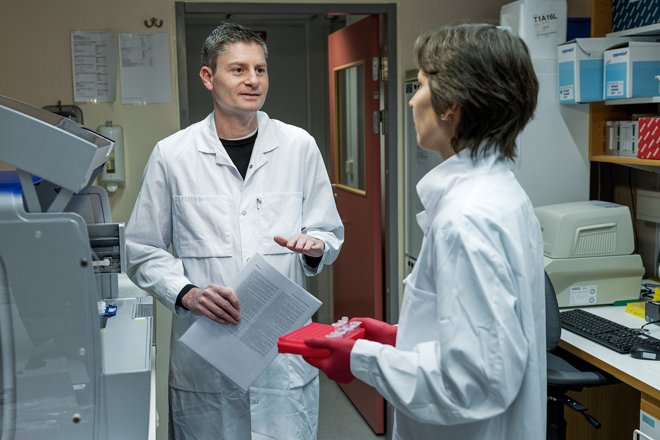A surprising discovery about the immune system in cases of cancer
Göran Jönsson is a Lund University professor conducting research on malignant melanoma. When he began his research career, immunotherapies were a relatively new form of treatment, and at the time, very little was known about the molecular structure of melanoma tumours.
“Melanoma is one of the tumour diseases against which immunotherapies were first introduced, and therefore the role of the immune system in relation to the melanoma cells could be investigated rather early on,” he says.
Previously, there was a lot of focus on the role of T cells, but when Göran Jönsson took a closer look at our immune system, he found to his surprise that another cell type seemed to have a more important function than previously realised.
“We wished to study cells that are part of the adaptive immune system, where the main cell types are T cells and B cells, so the B cells just came along almost as an appendage. We were quite surprised to see such a clear effect on the B cells and that they were organised into structures.”
The study showed that patients with so-called tertiary lymphoid structures in the tumours, an accumulation of B cells, seemed to benefit more from treatment with immunotherapy than others.
“In simple words, we often compare these structures to immunological factories that maintain the immune system against the tumour.”
Göran Jönsson’s research team studied melanoma patients treated with the immunotherapy checkpoint inhibitor – a type of therapy that specifically targets molecules on the T cells and enables them to fight the tumour more effectively. Many of today’s immunotherapies focus on T cells, but Göran Jönsson believes that they will also target other cells in our immune system in the future.
“The immune microenvironment in cancer tumours is much more complex than previously realised. It is a network of different cells that are connected and influence each other so that they become more effective against the tumour cells.”
Later studies have shown that structures with B cells are found in other types of cancer tumours that also benefit from immunotherapies, says Göran Jönsson. With the help of model systems, among other things, he is now trying to understand the molecular signalling behind the creation of the tertiary lymphoid structures and whether it would be possible to induce them therapeutically.
In recent years, Göran Jönsson’s research has attracted attention and awards, and the The Swedish Cancer Society has named him Cancer Researcher of the Year 2023.


